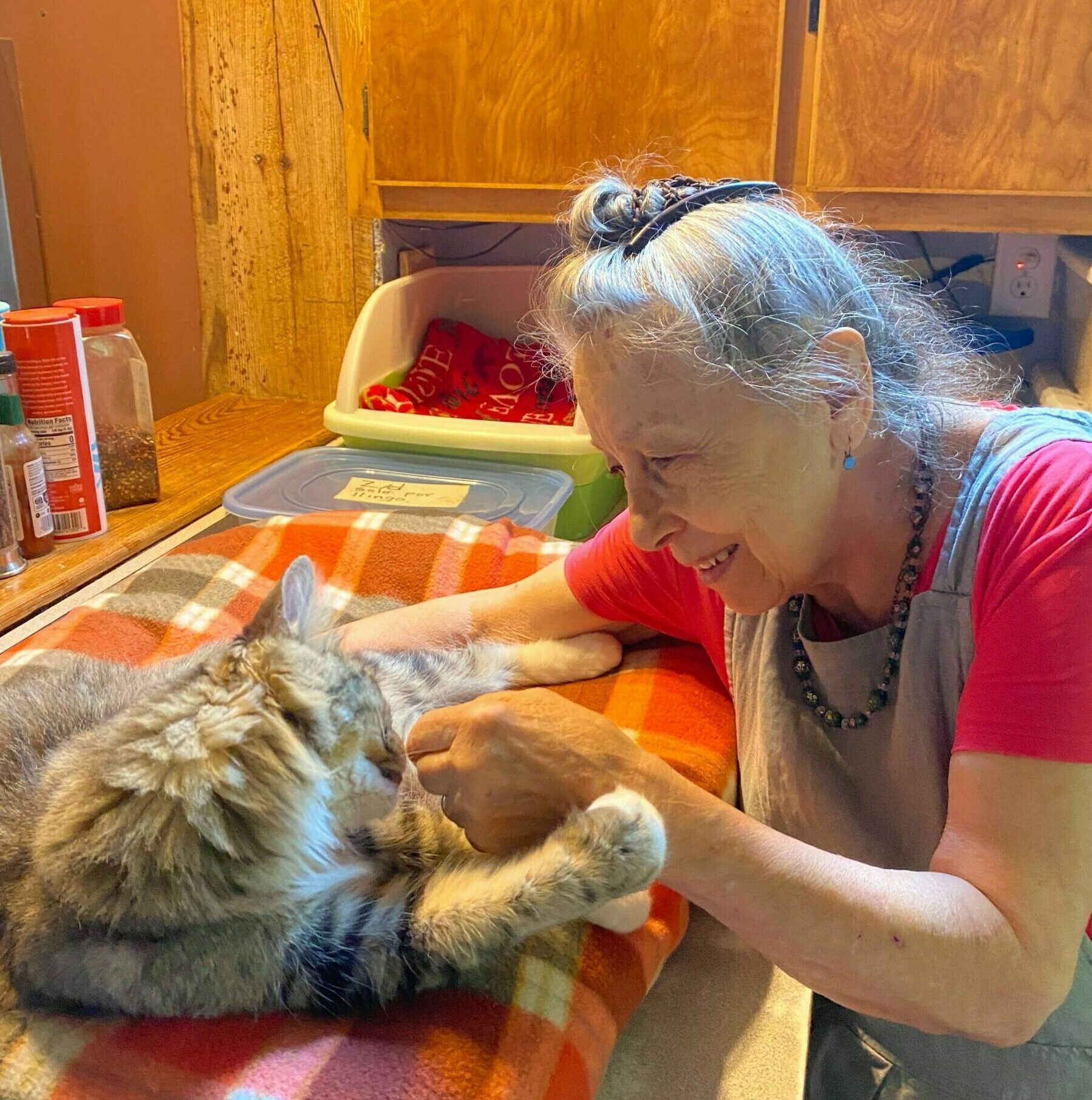Written by ZACHARY TURNER
Hamidou Sissoko works in his backyard, buffing out a piece of scrap metal from a propane tank. A wave of sparks cascades to his right. Once an auto mechanic, he now builds sculptures out of salvaged car parts.
“Usually, I don’t say that I’m a former car mechanic,” said Sissoko. “I say I’m an artist and I’m looking for this kind of material. When I describe it, [the mechanic] can tell, [I] know something about a car.”

Sissoko shows two wings he cut from a propane tank for his next sculpture. (Photo via Zachary Turner.)
Sissoko grew up in Mali. He immigrated to the United States in 2001 and worked as a mechanic until his daughter was born. Now, Sissoko welds nature-inspired sculptures, drawing from his past career and experiences.
“My ethnic group — we are farmers,” Sissoko said. “So, I grew up raising cows and sheep. When I came here [to the United States], I couldn’t do any garden[ing].” That changed 16 years ago after Sissoko and his wife bought their house. He has maintained a garden ever since, and frequently draws inspiration for his sculptures from the wildlife he encounters while gardening.
Sissoko joined nearly fifty other artists at the opening of the 34th annual Sculpture in the Garden exhibit at North Carolina Botanical Garden. Sculptors from the greater Triangle area display ceramic lotus flowers, mosaic goddesses, and scrap-metal gardens.
Sissoko stood in front of his installation, Grandpa’s Garden, where transmission-gear insects pollinate human-sized flowers made from manifolds, springs, and propane tanks. Sissoko named the installation after his father-in-law, who also enjoys gardening.
Many more sculptures line the trails of the garden. Emily Oglesby, the communications and exhibits coordinator at NC Botanical Garden, oversees the submission process and placement of the sculptures.
“Because this show is integrated into our native plant display gardens, they make for a constantly changing setting,” said Oglesby. “Right now, we’re in this late summer period [when] the sunflowers are appearing.” Astors and golden rod flowers also bloomed around the sculptures, adding to the colorful backdrop. “Soon the leaves will start to change, the light starts to change [and] the grasses get really fluffy.”

Emily Oglesby, communications and exhibits coordinator at the North Carolina Botanical Garden. (Photo via Zachary Turner.)
Inside a raised bed, white ceramic lotuses appear to float upon the murky waters, where tadpoles swim just below the surface. Artist Karen Stevens Fisher said handbuilding these blooms was cathartic.
“The lotuses just seemed perfect for me,” said Fisher. “They spoke to me because of all the things that I’ve been going through, including COVID.” The pandemic proved challenging for Fisher, like many others, and she said she hoped that out of the “muck, mud and watery depths will arise this beautiful flower at some point.”
Forrest Greenslade, a retired molecular biologist and longtime participant in the exhibit, took an educational approach to sculpture and submitted an installation he calls “Food for Sex.”

Greenslade’s Food for Sex depicts the process of pollination with metal insects feeding on metal flowers. (Photo via Zachary Turner.)
“The pollinator’s looking for a meal,” said Greenslade, “And the plant is looking for sex.”
His artwork hangs from the side of the gardens’ information center. Painted bees, ladybugs, and butterflies feed on pointillistic flowers made of galvanized steel. “As they’re moving the pollen from plant to plant,” Greenslade said, “It increases the genetic variability of the plant species, and therefore increases the probability that it will survive over millennia.”
Greenslade won an honorable mention for his work entitled Frogue Magazine’s Best Dressed of 2022, a collection of painted metal frogs. A panel of two local artists judged the sculptures and awarded Sissoko Best in Show for Grandpa’s Garden.
Sculpture in the Garden will run through December at the North Carolina Botanical Garden and is free to the public during normal operating hours.
Chapelboro.com does not charge subscription fees, and you can directly support our efforts in local journalism here. Want more of what you see on Chapelboro? Let us bring free local news and community information to you by signing up for our biweekly newsletter.












